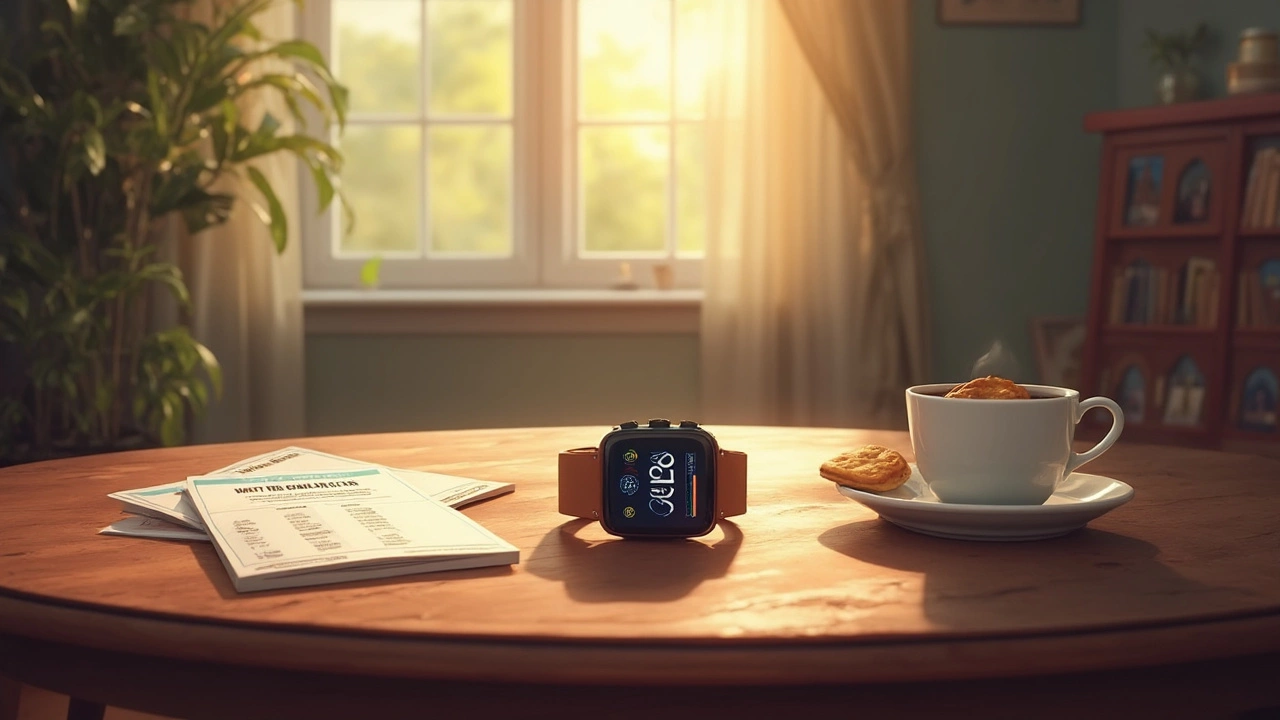
Heart rate watches are everywhere nowadays. You see them on wrists at the gym, in running parks, and maybe even on your neighbor's dog walk. They're popular for good reason. They let you keep tabs on your heartbeat in real time, promising insights into your fitness and overall health. But ever wondered if these sleek gadgets pose any risks you should be wary of?
First things first, let's decode how these devices function. Most heart rate watches use optical sensors that shine light through your skin to track your pulse. It's a neat bit of tech that gives you data without having to hook up to medical equipment. But, as handy as they are, questions about their safety aren't unfounded.
Concerns often pop up about electromagnetic frequency exposure or skin irritation from prolonged wear. But fear not, for these issues are typically minor and the gadget companies keep tightening up safety standards all the time. Stay tuned as we dig deeper into the potential risks and offer some handy tips on staying safe while getting the most out of your heart rate watch.
- Understanding How Heart Rate Watches Work
- Potential Health Risks and Concerns
- Safety Tips for Using Heart Rate Watches
- Maximizing Benefits from Your Wearable
Understanding How Heart Rate Watches Work
So, how exactly do these nifty gadgets keep track of your pulse? Well, it all starts with something called photoplethysmography (PPG) - a fancy term for a pretty simple process. Most heart rate watches use these PPG sensors. They shine a green light onto your skin, which reflects back with information about your blood flow. The watch picks up on these light changes to count heartbeats. Pretty cool, huh?
Now, some might have heard about watches using electrocardiogram (ECG) tech. These are a bit different. ECG measures electrical signals from your heart, similar to what you'd find in a hospital exam. Usually, only high-end devices, or those needing extra contact points, offer this feature. It's more accurate but less common in everyday use due to complexity.
Let's talk about the accuracy of these fitness tracker devices. While PPG tech has improved heaps, movements like swinging your arms, or even different skin colors, can affect readings a bit. The pros suggest you secure the watch snugly and try to keep still for the best results. Don't overthink it—mostly, they're good enough for regular folk, just looking to keep an eye on their daily health.
Some folks appreciate more advanced metrics, like VO2 max, stress levels, and even sleep patterns in these wearable technologies. Many heart rate watches now pair with your smartphone for even deeper insight, linking with apps that help you understand and track your data over time. Fun fact—did you know people with rhythm irregularities can use certain models to detect arrhythmias?
All in all, heart rate watches have come a long way. They're more than just a flashy gadget on your wrist. They've got some serious tech packed inside to help keep you on track with your fitness and health goals.
Potential Health Risks and Concerns
When it comes to heart rate watches, most folks wonder if there are any serious health risks lurking. It's good to know upfront that the likelihood of dangers is pretty low. However, here are some things to consider.
Radiation Concerns
Some worry about the electromagnetic frequencies emitted by wearable devices. The truth is, these frequencies are similar to those from your phone or Wi-Fi router, which we encounter daily. There's not enough scientific evidence to show that they're harmful, especially at the low levels produced by fitness trackers.
Skin Irritation
If worn too tight or for extended periods, heart rate watches can cause rashes or irritation. This happens because of sweat and friction. If you've got sensitive skin, take breaks from wearing the device. Keeping both your skin and the watch clean can help prevent unwanted irritations.
Accuracy Issues
While not exactly a health risk, accuracy is a concern. Some users find the heart rate data isn’t always spot on. It's important to remember that these gadgets are great for giving a general idea of your fitness levels but aren’t a substitute for professional medical equipment.
Pacemakers and Other Implants
People with pacemakers or other implants might need to be more careful. Though risks are minimal, it's wise to check with a healthcare provider to ensure the wearable technology won't interfere with your device.
In summary, heart rate watches are generally quite safe for the average user. Being aware of these potential concerns helps you use your tracker smartly, without worry.

Safety Tips for Using Heart Rate Watches
Using a heart rate watch can be safe and beneficial, as long as you keep a few important things in mind. So here are some practical tips to help you make the most of your fitness tracker without worrying about your health or safety.
Check the Fit
First off, ensure the watch fits properly. Not too tight or too loose. A snug fit ensures accurate readings without causing irritation. Remember, your skin needs to breathe, and nobody wants a sweaty wrist rash. If you start feeling discomfort, take it off for a bit.
Take Breaks
You don’t have to wear it 24/7. It's okay to give your wrist a breather. This is especially true when you're sleeping. Your skin will thank you for the break, and it's a good opportunity to charge the device too.
Be Aware of Allergies
Some people might be allergic to certain materials used in wearable technology. If you notice any signs of an allergic reaction, like itching or redness, it's best to switch to a model with hypoallergenic straps or consult with a dermatologist.
Limit Exposure to Water
Despite many heart rate watches being water-resistant, try not to expose them to water for extended periods. A quick splash is fine, but a long soak in a hot tub isn't advisable. Check the device's water resistance rating in the manual.
Mind the Electromagnetic Exposure
A heart rate watch does emit some electromagnetic frequency (EMF), although generally low. If you're concerned, maybe don't wear it all the time, especially during sleep. Balance the health benefits of the data with the peace of mind from reduced EMF exposure.
Here's a quick table summary to help you remember these pointers:
| Tip | Action |
|---|---|
| Check Fit | Ensure snug and comfortable fitting |
| Take Breaks | Avoid 24/7 wear |
| Allergies | Opt for hypoallergenic materials |
| Water Exposure | Limit lengthy contact with water |
| EMF Awareness | Minimize excessive wear time, especially during sleep |
Embrace your tech but do it smartly. Following these straightforward tips will help you enjoy your heart rate watch while keeping things worry-free.
Maximizing Benefits from Your Wearable
So, you've got a new heart rate watch and want to squeeze every bit of value from it. Here's the deal: it's not just about strapping it on your wrist. To make the most of your wearable, be sure to tap into its full range of features.
Get Familiar with Your Device
Before anything else, spend time getting to know your watch. Dive into the user manual, and explore the app that usually comes with it. These tools offer insights into everything your gadget can do – from tracking different workouts to watching your sleep patterns. When you know what your device is capable of, you'll use it more effectively.
Set Realistic Goals
Take the plunge and set achievable fitness goals using your heart rate watch. Track steps, monitor calories, or aim for specific heart rate zones during workouts. Make sure these goals are realistic and fit your lifestyle to keep your motivation high.
Keep Your Data Private
Your smartwatch gathers loads of personal data. It's crucial to adjust the privacy settings to safeguard your information. Regular software updates are a must – they often contain security enhancements that protect your data.
Track Your Progress Consistently
Consistency is key. Check your stats regularly to see how you're progressing toward your goals. Noticing improvements can give you the boost you need to keep moving forward.
Here's a quick overview of how consistent tracking aids in achieving fitness goals:
| Benefit | Percentage Improvement |
|---|---|
| Increased Motivation | 65% |
| Improved Fitness Understanding | 70% |
| Goal Achievement | 75% |
Stay Updated with Trends
The world of technology won't stop evolving, and neither should your use of it. Join online forums or groups where people share tips on using the latest features or updates on heart rate watches. This community can be a great source of inspiration and encouragement.
By really diving into all your fitness tracker has to offer, you'll not only enhance your health journey but can also enjoy the process. Happy tracking!
